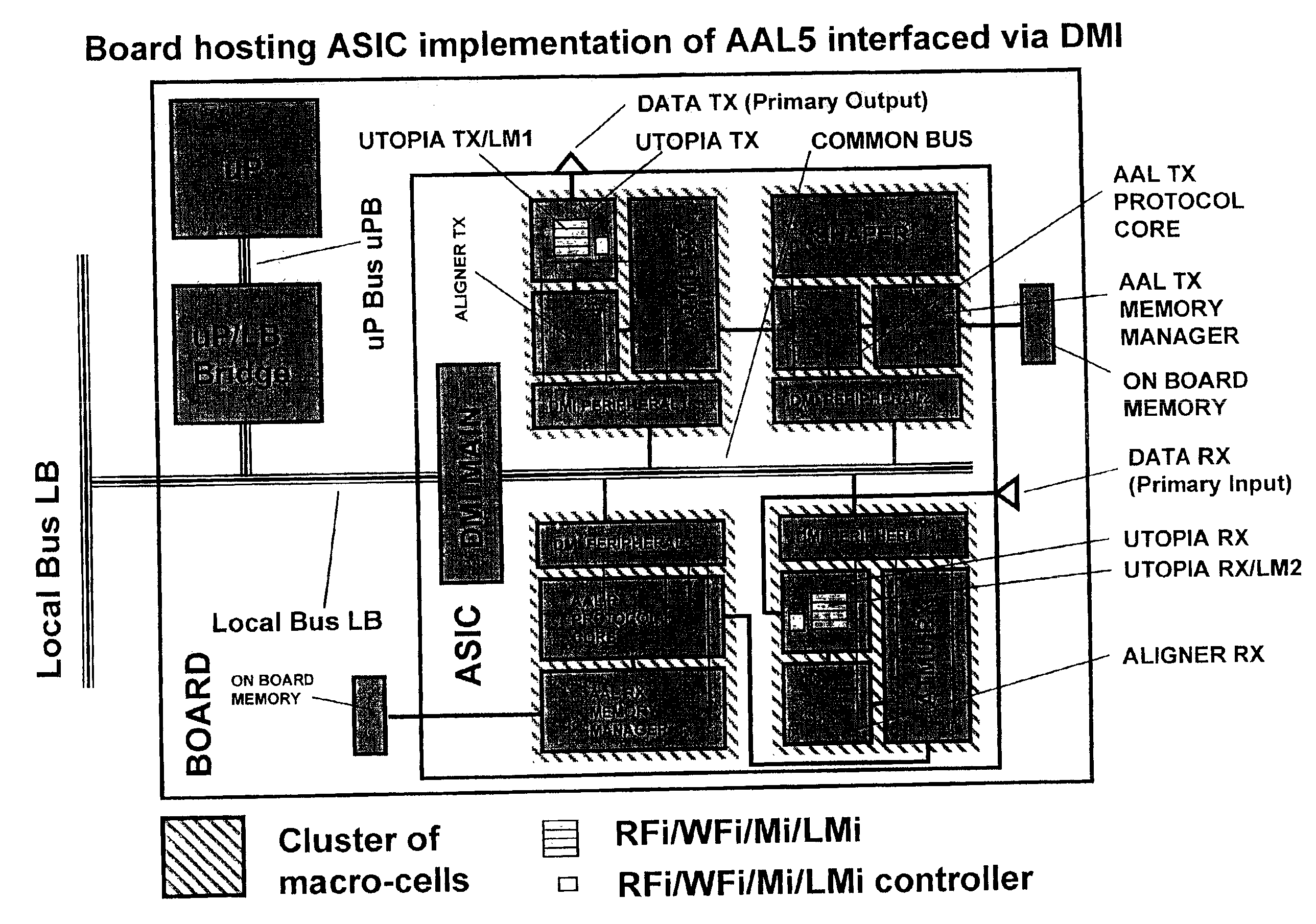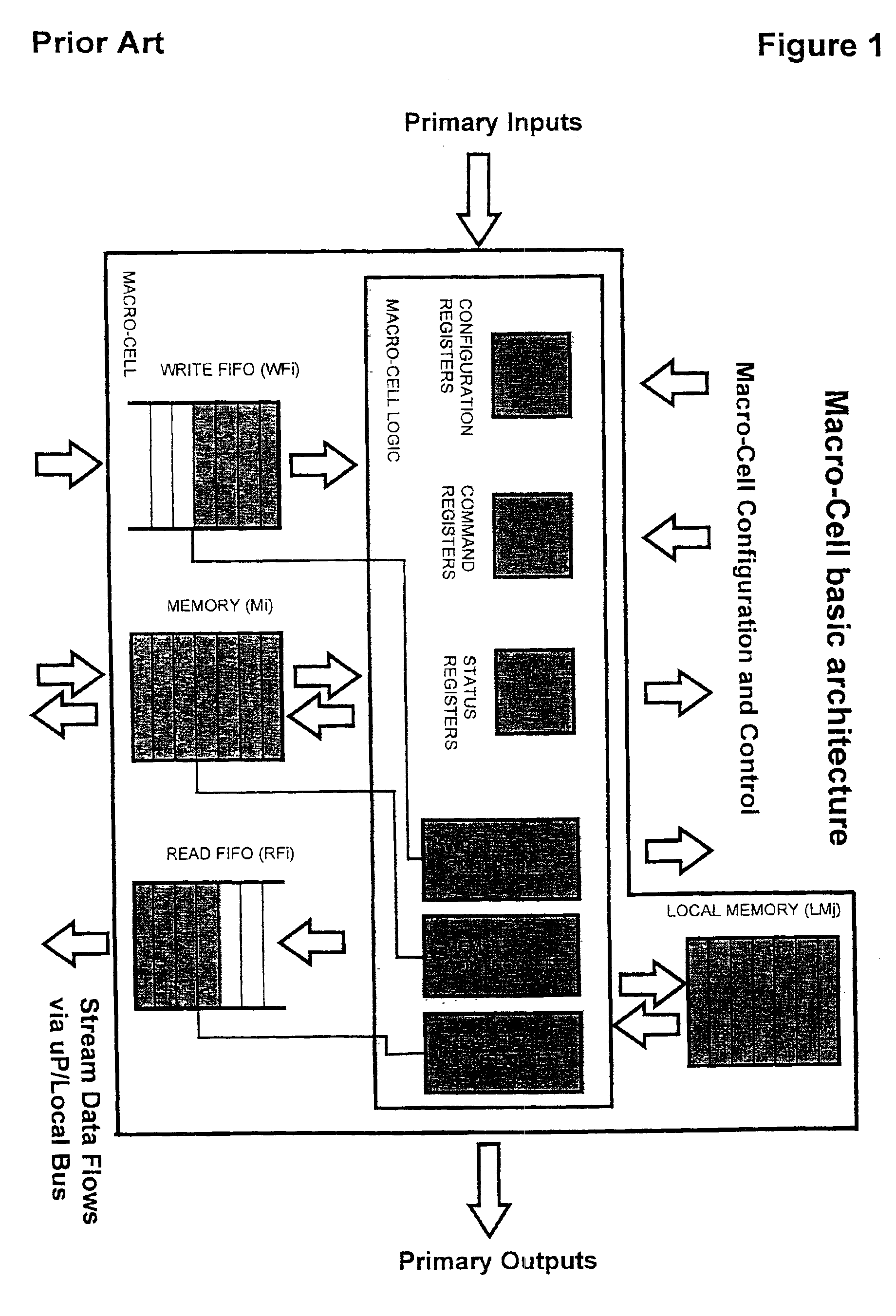System of distributed microprocessor interfaces toward macro-cell based designs implemented as ASIC or FPGA bread boarding and relative common bus protocol
a distributed microprocessor and interface technology, applied in the field of microprocessor interfacing, can solve the problems of developing fully verified complex designs, developing very complex design implementations, and further bus based interconnection resources, and achieves the effects of easy development and interfacing of user macro-cells, high modularity, and rapid prototyping
- Summary
- Abstract
- Description
- Claims
- Application Information
AI Technical Summary
Benefits of technology
Problems solved by technology
Method used
Image
Examples
second embodiment
[0162]With reference to FIG. 10 the invention is shown. It differs from the embodiment of FIG. 9 mainly for the absence of the block uP / LB BRIDGE at a left side of the BOARD and for the presence of an additional block DMI MAIN2 at the opposite side of the board. In FIG. 10 the microprocessor uP is directly connected to the block DMI MAIN1 inside the ASIC by means of the microprocessor bus uPB. Block DMI MAIN2 has a first side connected to a local bus LB on the back-plane, and the opposite side connected to a bus COMMON-BUS 2, while the block DMI MAIN1 is interposed between uPB and COMMON-BUS 1 buses, the last bus is the COMMON-BUS of the previous FIG. 9. First and third clusters of macro-cells are unchanged, while the remaining two clusters each includes an additional DMI PERIPHERAL macro-cell, both connected to the COMMON-BUS 2. More precisely, the second cluster includes a DMI PERIPHERAL6 macro-cell connected to AAL TX MEMORY MANAGER and AAL TX PROTOCOL CORE macro-cells instead of...
third embodiment
[0163]With reference to FIG. 11 the invention is shown which differs from the embodiment of FIG. 9 only for the particular implementation in which the four clusters of macro-cells and the block DMI MAIN constituting the ASIC of FIG. 9 are implemented as many FPGA. The presence of the COMMON-BUS highly reduces the number of interconnections between DMI PERIPHERALs and relative user developed macro-cells; this makes the new implementation suitable for prototyping the ASIC, being the architecture the same for both ASIC and FPGA bread-boarding, no changes are necessary changing the implementation technology.
[0164]With reference to FIG. 12 the COMMON-BUS of the previous FIGS. 9 to 11 is detailed into functionally structured sub buses. This means that some buses could not be physically present in the implementation but their function must be implemented (e.g. some bus can be multiplexed in time sharing fashion on the same physical support). Each sub bus has either direction upstream or do...
PUM
 Login to View More
Login to View More Abstract
Description
Claims
Application Information
 Login to View More
Login to View More - R&D
- Intellectual Property
- Life Sciences
- Materials
- Tech Scout
- Unparalleled Data Quality
- Higher Quality Content
- 60% Fewer Hallucinations
Browse by: Latest US Patents, China's latest patents, Technical Efficacy Thesaurus, Application Domain, Technology Topic, Popular Technical Reports.
© 2025 PatSnap. All rights reserved.Legal|Privacy policy|Modern Slavery Act Transparency Statement|Sitemap|About US| Contact US: help@patsnap.com



